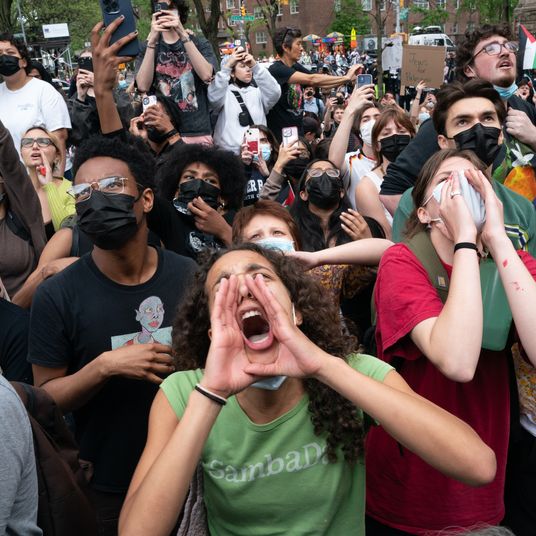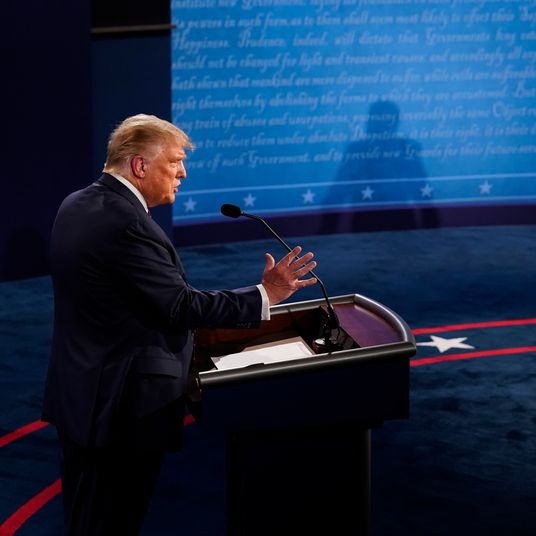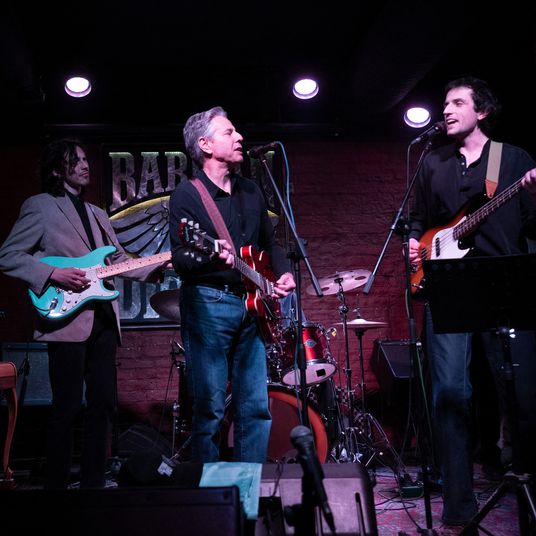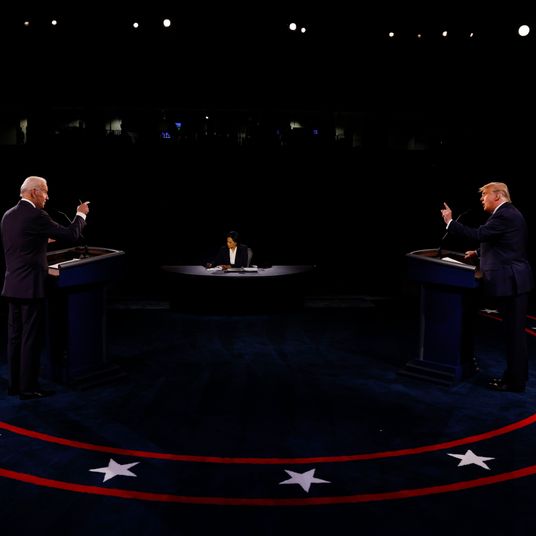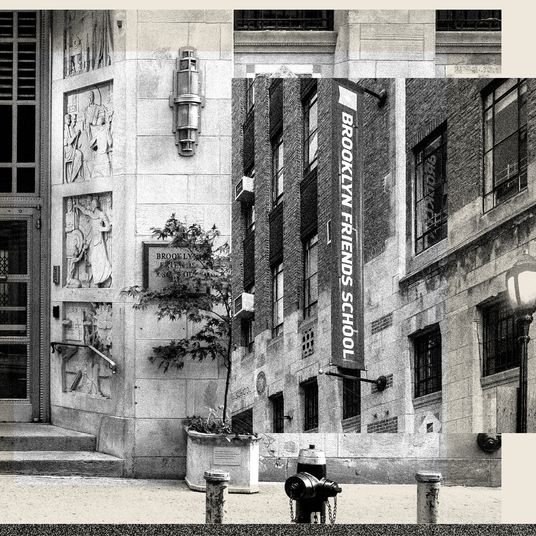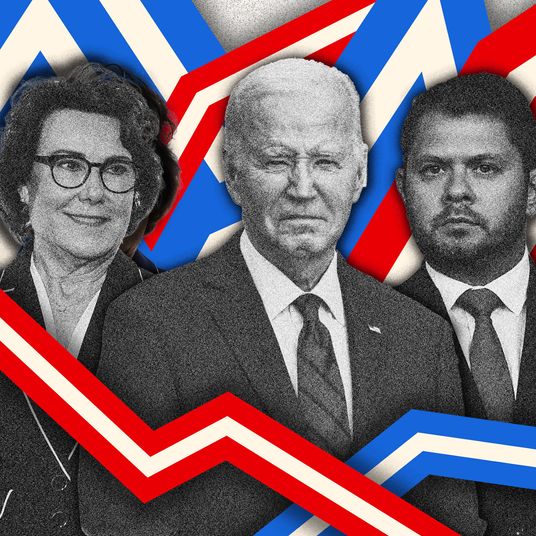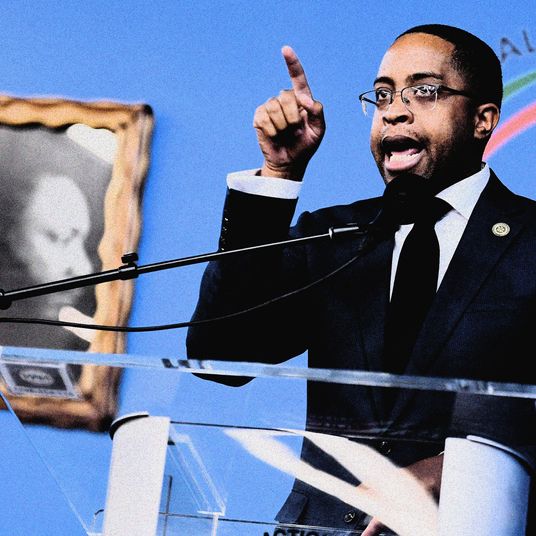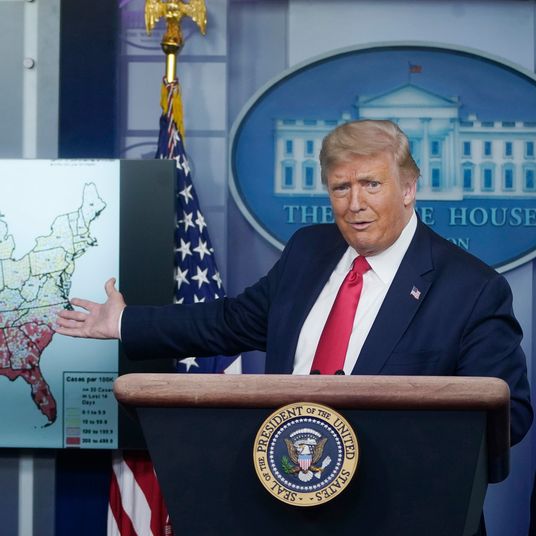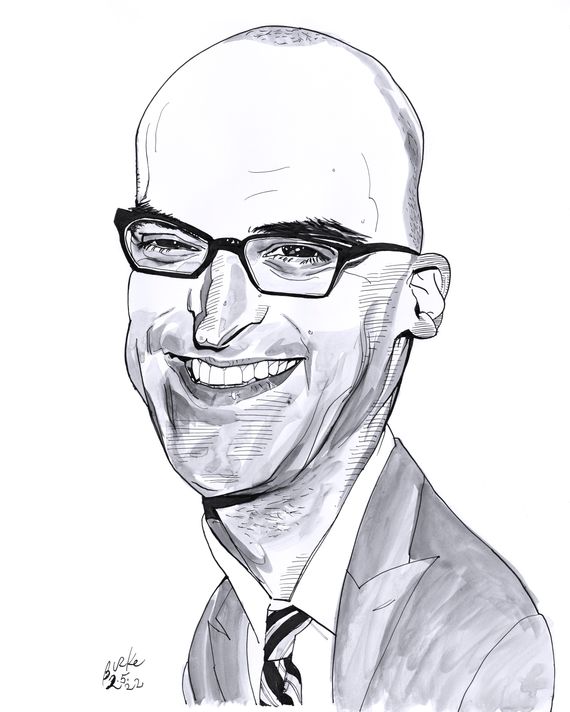
Approximately 5 million people start their day with David Leonhardt, the author of the New York Times’ morning newsletter. That figure makes Leonhardt one of the most influential writers at the most influential paper in the country. Since its launch in May 2020, The Morning has focused primarily, though not exclusively, on COVID-19. As Leonhardt recently told me, COVID turned out to be “the perfect story” for a daily newsletter “because people are desperate for information.” The audience, he found, was insatiable. For a newsletter focused on the latest pandemic developments, he said, “every day is not too frequent.”
Times science and health reporters won a Pulitzer Prize in 2021 for their coverage of the pandemic, but even big A1 stories receive but a fraction of the bleary eyeballs that greet Leonhardt’s genial, data-driven missives every day. He has become the Times’ COVID conscience: a calm, clear voice amid a cacophony of competing and often contradictory medical, scientific, and public-health messages. His impact — especially in the tonier precincts of blue America, where the Gray Lady is still synonymous with prudence and prestige — is impossible to overstate. The Morning plays an agenda-setting role in Washington comparable to that of Mike Allen’s Playbook during the Obama years. According to Politico, even President Joe Biden reads Leonhardt.
More than perhaps any writer in America, Leonhardt is positioned to shape our collective common sense about the state of the virus and our society’s responses to it. It’s a huge platform and a huge responsibility, both of which he takes seriously (as he takes most things). Internally, Times publisher A.G. Sulzberger has begun to refer to the paper as having not one but four front pages: the print edition, the website, The Daily podcast hosted by Michael Barbaro, and The Morning. Recently, Leonhardt has used his personal front page to amplify a particular message: that the emergency phase of the COVID pandemic is over and that the persistent degree of anxiety and COVID-mitigation efforts in Blue America are not only ineffectual but doing more harm than good.
“Many liberals have spent two years thinking of COVID mitigations as responsible, necessary, even patriotic. This attitude has become part of their identity,” Leonhardt told me. This was a good thing earlier in the pandemic, leading to high vaccine uptake, masking, and compliance with social distancing and lockdowns. But thanks to vaccination and the cresting Omicron variant, the costs of liberal caution — he cites “mental-health problems, anger, frustration, isolation, drug overdoses, vehicle crashes, violent crime, learning loss, student misbehavior” — have begun to outweigh the benefits. Leonhardt, who has described his journalistic colleagues as having a “bad-news bias,” sees his role as being an implicit corrective to some of the more alarmist coverage showing up elsewhere in traditional media and even in the Times itself.
This position has enraged some readers — doctors, scientists, and journalists among them — who believe it’s absurd to call for a return to normal when, according to the Times, around 2,000 people are dying from COVID each day. “Leonhardt is one of the key pundits leading the charge of those who want to declare unilateral surrender to COVID-19,” Gregg Gonsalves, an epidemiologist at the Yale School of Public Health, told me. In a January 26 appearance on The Daily, Leonhardt pressed his case that America is at a “pivot point” in which COVID “goes from being this horrible, deadly, life-dominating pandemic to something that is more endemic — to something that looks more like things that we deal with all the time without shutting down daily life, like the flu.” He cited the results of a poll, conducted by his staff and Morning Consult, purporting to show that while older Republicans remain irrationally unafraid of COVID, younger and vaccinated Democrats are irrationally overcautious about it. The episode produced a wave of denunciation online. “What we learn from this episode is not really what Americans think about the pandemic, but rather Leonhardt’s flawed interpretations thereof,” began a viral tweet thread by Cecília Tomori, a public-health scholar at Johns Hopkins. “People cannot simply navigate an infectious disease based on their own individual risk (even if it was fully known) — they are part of all the complex networks. They make decisions in relation to one another.”
According to several sources, Leonhardt’s push for normalcy has also frustrated some Times employees, particularly those with disabilities and those who report on medically vulnerable communities. “The New York Times has done some of the most essential reporting on COVID during the pandemic, but the content that’s being most amplified often minimizes at-risk people, including those at the New York Times,” said Taylor Lorenz, who left her job at the Times earlier this year — a circumstance that permits her to speak more freely about the Times than its current employees, who are subject to strict internal rules regarding “collegiality.” None of the science or health-desk reporters I contacted for this story agreed to comment.
Outside the newsroom, the reaction to Leonhardt’s Daily episode “was unusually large,” said Barbaro, “and it was divided. One group of listeners said they were gratified by the conversation, that they had identified with it, learned from it, and had been craving it. Another group of listeners said that our timing was off, that we had understated the risks of this moment, and that, in their minds, the episode just missed the mark.” Barbaro was moved but not chastened by the feedback. “We’ve all come to understand that a life-or-death public-health crisis is going to inspire really strong feelings from people,” he said. “No episode is perfect, and I wouldn’t call this episode perfect.” (Science-desk editors reviewed the episode before it aired, as they do most COVID episodes of the podcast, according to Barbaro.)
The host also noted that, within a few weeks of airing the Leonhardt episode — along with a companion segment featuring the White House’s chief medical adviser, Anthony Fauci — “we did start to see a pretty meaningful change in policy.” In recent weeks, blue-state governors have loosened mask mandates and other restrictions, signaling what New Jersey governor Phil Murphy called “a huge step toward normalcy.”
Barbaro and Leonhardt see these changes as reflective of the changing national mood and epidemiological reality — not as a consequence of their coverage. “I think we had the sense that something was happening because something was happening,” Barbaro told me. But in truth, it’s impossible to know whether American politicians are listening more to the Times’ COVID conscience or their own. Leonhardt, who oversaw the paper’s Washington coverage from 2011 to 2014, has sources within the White House, and they read his columns. “I do have the sense that Biden himself is on the side of the scale of ‘We need to move back to normal,’” Leonhardt told me, “which would make sense if you think about his instincts on many things.”
Lately, Leonhardt has served as a sort of Rorschach test for liberal America. For those who are healthy and ready to move on with their lives — or those who, by choice or necessity, already have — his message is comforting and authorizes their behavior, their exhaustion, and even their resentment toward those who still insist on caution. For others, Leonhardt is a dangerous font of wishful thinking: a Pied Piper leading the nation’s liberal elites into a self-satisfied state of necro-normalcy in which thousands of lives are disposable. These disagreements are as much about how we should regard all this suffering as they are about how we may prevent it. The pandemic has dealt unspeakable damage, but our social system has evinced a remarkable capacity to metabolize mass death and to acquiesce to more and more morbid definitions of normal. For Leonhardt’s sharpest critics, this appetite for normalcy is a disturbing sign of our callousness; for his defenders, it’s the only way beyond our despair.
Leonhardt’s career at the Times has had a few ups and downs but mostly ups. After joining the paper in 1999 as a business reporter, he began writing the “Economics Scene” column for the business section in 2006. In 2011, he won a Pulitzer for commentary and was named D.C. bureau chief, a tough job considered a stepping-stone to the masthead. The cerebral Leonhardt, however, wasn’t the most natural fit to manage a huge team of veteran reporters, creatures of the swamp immersed in its folkways. After three years, he was made editor of The Upshot, a venture intended to fill readers’ itch for Nate Silver–style data journalism after he left the Times to start FiveThirtyEight. The Upshot was a hit. In 2016, Leonhardt was given an op-ed column and a D.C. office on “murderers’ row” alongside Maureen Dowd, Thomas Friedman, and David Brooks. Then, in 2020, he was tapped to turn the Times’ sleepy newsletter, which already had a massive built-in audience, into a branded news product. That became The Morning, and its readership has only grown.
“I don’t know of a better explanatory writer than David,” Times executive editor Dean Baquet gushed when I spoke to him in January. “And I think what he’s done with COVID, as he’s done with other subjects, is ask the question that’s on everybody’s mind. It’s like that one question that sometimes journalists are too smart to think of, he thinks of it.” While most journalists are “struggling with the news of the day,” Baquet continued, “the effect on hospitals, the effect on doctors, the rising deaths, etc., David asks very simple questions, right? Like, ‘Are things getting better or not?’” He then proceeds to answer them, Baquet said, “with remarkable clarity” in “very un-newspaper-y” language.
“For my money, David is the best the Times has at answering the big ‘Where Are We Now in This Pandemic?’ questions,” said Donald G. McNeil Jr., a former science-desk reporter who resigned under pressure in 2021 after he was accused of uttering a racial slur in front of high-school students. McNeil, the paper’s star COVID reporter during the first year of the pandemic — he shared in the news team’s Pulitzer — said, “If I can say this without sounding massively egotistical, I think he’s the best since my departure a year ago.”
When I first spoke to Leonhardt over the phone in late December 2021, I was struck by how similar his demeanor is to his writing style. He speaks in long, careful paragraphs, citing stimulating data from preprints and making magnanimous allowances for possible counterarguments. It felt like having a conversation with a newspaper column. I struggled to get him to talk about himself (he insists he is not “private,” only “uninteresting”), and he elegantly evaded my efforts to goad him into provocative indiscretions. Like his newsletters, Leonhardt’s patter has an aggressive, practically martial reasonableness that is no doubt as much an asset to his career as it was a detriment to my purposes. Once, while explaining his discomfort as a green columnist with abandoning the old news-desk imperative to represent the “view from nowhere,” I thought to myself, Okay, David, how about abandoning the view from no one?
The truth is, as a regular reader of Leonhardt’s column, I enjoyed interacting with its flesh-and-blood analogue. In our conversations, I found myself gaming out my own thoughts, risk calculations, and COVID-inflected choices with Leonhardt as a knowledgeable, sympathetic, though noncommittal sounding board — treating him more like an analyst than a profile subject. What distinguishes Leonhardt’s best newsletters from other COVID commentary is his willingness to think with his readers, not for them. “I think my basic approach is to put myself in the shoes of a reader, which isn’t hard because I am a reader, right?” he said. “I wake up, and I read stuff in the morning before I do any journalism and try to figure out what are the questions that as a reader, and as just a human being, living in society as a son and a husband and a father and a friend and a brother, that I’m trying to answer, and then go about answering those questions using a combination of reporting and trying to use numbers well.”
The therapeutic dimension of Leonhardt’s approach is perhaps not incidental. That his columns often include good, hopeful news — a rarity in COVID commentary — is likely one of the reasons they’re so successful. I’ve spoken to several friends (vaccinated young people) who told me they feel Leonhardt’s newsletter is gratifying precisely because it gives them permission to stop being terrified all the time: a forgiving COVID superego to replace the exclusively punishing one they encountered elsewhere in the progressive ecosystem.
For his part, Leonhardt admits to being “an optimist by nature.” It has caused him some trouble along the way. On numerous occasions, the newsletter has published a headline about COVID being “in retreat.” In each case, a new wave of disease was lurking around the corner. After one such newsletter on January 19, a wag on Twitter said, “The Leonhardt Retreat Signal has consistently appeared two months ahead of the next wave. I am now concerned about late March 2022.” Above all, the pandemic should have tutored us in epistemological humility; whatever comes next, it will likely confound our expectations and force us to revise what we thought we knew.
But I don’t think Leonhardt is entirely mistaken when he describes a “bad- news bias” in COVID reporting. I suggested to him that one explanation for this phenomenon is a hangover from the Trump era when most of the sunny news about COVID came from world-historic liars seeking to minimize the pandemic for political gain. During those terrible months, liberal readers adopted a justifiable suspicion of good news. Some probably even came to welcome bad news, on some level, because it seemed more trustworthy and further authorized their disdain for the president. Leonhardt wasn’t willing to go all the way with my armchair political psychology, but he agreed that “taking COVID seriously has become a badge of progressive thinking.” Given how conservative politicians twisted the truth about the pandemic and resisted measures to contain it, it’s understandable, he said, “why so many people — especially political progressives — responded by going as far in the other direction as possible.” He added, “Those steps saved lives.”
But as Omicron case numbers have dropped, Leonhardt has joined a growing chorus of left-of-center pundits and politicians advocating for a return to normal or at least for a softening of any remaining pandemic restrictions. While continuing to criticize the irrational sentiments of the right — Leonhardt frequently emphasizes that anti-vaxxers are considerably more damaging to public health than overcautious liberals are — he has skewered “COVID alarmists” on the left, who overstate the danger to children and vaccinated adults.
“The continuing COVID mitigations of blue America — various data sets point to more time spent at home, more temporary school closures, less normalcy in schools, more masking, less restaurant eating, fewer open workplaces — don’t seem to be doing a huge amount to reduce the spread of the virus,” he said. “Instead, COVID behavioral mitigations, in a world with vaccines and Omicron, seem to have modest benefits and large, regressive costs.” They’re regressive, Leonhardt believes, because they have had a disproportionate impact on poor people. “Schools in blue areas have been more likely to shut down,” he said. “That really damages kids. It damages poor kids and kids of color the most.”
Leonhardt’s position, which some have called “COVID realism” (he told me he accepts this designation), has inspired criticism from public-health experts. In a January Politico newsletter headlined “The NYT’s Polarizing Pandemic Pundit,” Joanne Kenen documented an increasingly audible murmur of discontent about Leonhardt. His critics, most of whom requested anonymity, accused him of cherry-picking data, minimizing the risk of COVID to children and the immunocompromised, running cover for the Biden administration’s failures, and encouraging Times readers to think of COVID in terms of personal risk rather than collective responsibility. Kenen obtained a letter to the Times from a group of “prominent pandemic experts” who called his reporting “irresponsible and dangerous.”
Leonhardt, however, has stuck to his guns. “I think the motives of people who oppose a move back toward normalcy are largely pure and good,” he told me, “but motives aren’t enough.” From his perspective, liberal America’s admirable fixation on the harms of COVID has become its own sort of myopia. The Times’ COVID tracker, for example, was a brilliant innovation that allowed readers to see the damage of the pandemic when government officials would just as soon have hidden it. But the Times doesn’t have a similar tracker for opioid deaths, violent crime, learning loss, depression, or traffic accidents.
“I often find in these discussions, there’s a kind of ‘yes, but,’” he said. “‘Yes, but the elderly.’ I mean, I’ve written the ‘Yes, but the elderly’ myself. ‘Yes, but the immunocompromised.’ ‘Yes, but we’re not talking about zero death.’ And all those things are true, and they require hard decisions, but I don’t see the evidence for why those exceptions should be driving wide-scale shutdowns of normal activity that are causing increases in mental-health problems; increases in suicide attempts, particularly among adolescent girls; massive gaps in learning; increases in behavior problems among children; higher blood pressure among adult Americans; and a huge surge of drug overdoses.”
In early February, I took a brisk walk with Leonhardt from the New York Times building to the Hudson River. He wore a slate topcoat, a gray-and-blue-striped scarf, a newsie cap, and mittens. He was precisely as tall as I thought he would be. When we entered a Starbucks, he put on a KN95 mask and ordered a black tea. (Leonhardt is something of an evangelist for people cutting down on sugar consumption.) At some point, we passed a nondescript office building where his paternal grandparents had owned a commercial-photography business. “My dad, as a toddler, was their unpaid diaper model,” he told me. When Leonhardt’s grandfather, a German Jewish refugee, died in 1950 at age 42, Leonhardt’s grandmother kept the store going; it was uncommon enough at the time for a woman to own a business in Times Square that she was profiled in the Times. Leonhardt has a copy of that story framed in his office.
He was born in Manhattan. His parents were leftists. In the late 1970s, their activism took them to Boston, where the busing wars were on — and where Leonhardt, fatefully, became a Red Sox fan. The family returned to New York when Leonhardt was 8. He described himself as a “classic bored, acting-out adolescent.” Nothing terribly illegal, but still not ideal. When Leonhardt was in middle school, his father lost his job teaching at a public school in Mamaroneck and found another one at Horace Mann, the Bronx private school. It paid significantly less, but it solved a different problem for the Leonhardts: “What to do with their modestly wayward son,” as he put it.
Leonhardt got a scholarship to attend Horace Mann, where he quickly found himself among a group of “crusading student journalists” who criticized the administration over sexism and racism and agitated for apartheid divestment. (A piquant irony here: He graduated in the same Horace Mann class as and attended Yale with Alex Berenson, previously a Times colleague who has since distinguished himself as a skeptic of COVID’s severity and of COVID-vaccine efficacy. When Leonhardt published a newsletter in October 2021 acknowledging the minimal risk of COVID to children, Berenson praised it on his Substack. “Wish Dave luck today,” Berenson wrote. “Telling the truth about COVID at the Times is a risky proposition.”) Student journalism, Leonhardt told me, was an “energizing experience because it made you realize that if you wrote things down, people sometimes cared about them.” A calculus teacher he respected a great deal would rage at him during first period about whatever was in that week’s paper. “There is no value” in making people angry, Leonhardt told me. “But you also can’t be afraid of it.”
Some of the anger directed toward Leonhardt stems from his ambiguous but powerful position in the newsroom, where he helms a nine-person fiefdom. Baquet insisted to me that Leonhardt’s contribution is neither “commentary” nor “opinion” but “news analysis.” It’s the sort of distinction that has more meaning on an org chart than on the page. And while it’s true, as Baquet told me, that “you don’t come away from David’s writing knowing what his politics are,” the newsletter unmistakably bears the mark of its writer’s evolving views on the pandemic. Leonhardt admits as much. “Early on, before the vaccines came, my focus was on how much worse the U.S. was doing than many other countries,” he told me. “But over the course of the last year or so that vaccines have become available, I think the story has shifted, and my focus has too.”
That shift has not gone unnoticed. On a recent episode of the left-wing health policy podcast Death Panel, Abigail Cartus, a public-health postdoc at Brown University, called Leonhardt a “relentless minimizer” of the pandemic. The purpose of his intervention, said Steven W. Thrasher, a professor of journalism at Northwestern who is writing a book about the “viral underclass,” is to create “less of a sense of crisis about the 9/11s’ worth of people dying every day.” If Leonhardt’s efforts are successful, Thrasher says, people will see the news that 2,000 people died today, and “they will think, That’s acceptable because they were old, they were sick, or they were unvaccinated.” And that, Thrasher says, is “eugenic and genocidal” logic.
“There’s so much ideological work you need to do to try to convince people that this thing that’s killed a million people in your country is fine and we’re overreacting,” said Justin Feldman, a social epidemiologist at Harvard. People like Leonhardt, he said, “are doing that work.” Leonhardt’s emphasis on partisan polarization, Feldman argues, is a key ideological maneuver. If the only people dying of COVID are anti-vaxx ideologues, it becomes easier to convince liberals that the deaths are tolerable and that there’s nothing we can do to prevent them. But as Feldman notes, undervaccination is also correlated with poverty and the lack of health insurance.
“You can’t escape the fact that the poorest Americans are disproportionately likely to be unvaccinated,” said Ed Yong, The Atlantic’s Pulitzer-winning COVID reporter, “and that among the poorest groups, the number of people who say they want or would consider a vaccine outnumbers the people who are outright never going to get it. That’s the access issue right there, just staring you in the face.” Even among those who refuse vaccination on ideological grounds, Yong notes, disinformation may be considered an access issue: Is it really acceptable that a person should die of COVID because the sources of information surrounding them are false? Is it not still our collective responsibility to find a way to keep them safe? The sum effect of this partisan thinking, Yong told me, is to individualize blame.
Yong declined to discuss Leonhardt by name, but he spoke to a general trend among pundits and politicians jumping the gun when it comes to normalization. “We are still getting a daily mass-death event. Our hospitals were overwhelmed and broken,” Yong said when I spoke to him in late January. “And yet the narrative, I think, from many corners of the media has been one of optimism, of thinking about a return to normal.” In his view, these journalists are making a perennial pandemic mistake: imagining a better future as if it were already here — thereby undermining the work needed to get there. “Saying endemicity is the future doesn’t make it the present,” Yong said. “I feel that a lot of influential people in this pandemic basically got vaccinated and then just kind of lost the plot.”
In early January 2022, Leonhardt dedicated a lengthy newsletter to the costs of school closures. In our discussions, he emphasized his sympathy for teachers. “We underpay them badly in our society,” he told me. “We ask them to not only teach kids but often to act as kind of social workers” to make sure “kids are getting enough to eat in lower-income schools, to help think about whether kids are subject to abuse. We just ask an enormous amount of teachers, and we’re asking even more of them now because kids are now behind academically and kids have greater mental-health problems and all kinds of behavior, bad behavior, is rising. Their jobs are extremely hard, and they’ve gotten harder during the pandemic.”
But, he said, “some teachers unions have exaggerated the threat COVID presents to vaccinated people and children.” He added that they have “downplayed and understated the amount of damage we are doing to kids by keeping them out of school.”
Days after that newsletter, Leonhardt appeared on a podcast hosted by the American Enterprise Institute’s Marc Thiessen and Danielle Pletka. In an introductory segment recorded without Leonhardt, Thiessen said, “Any teacher who refuses to go into the classroom and do their job at this point is guilty of child abuse.” Not to be outdone, Pletka added that teachers striking for more COVID safeguards in Chicago are “a disgrace to their profession.”
I read Leonhardt the statements. “I strongly disagree with that,” he told me. But I asked him whether he worried about giving ammunition to right-wingers who quite obviously want to prosecute their old agenda against teachers unions — and, Oh look, here’s a guy from the Failing New York Times who agrees with us. “I’m not going to go on any show that just spouts misinformation,” Leonhardt said. “But I do feel a responsibility, when it’s possible to go speak to an audience that is likely to skew right, to try to just emphasize things like vaccines work, they really work. But I fully understand they’re having me on because my last name is ‘Of the New York Times’, and, right, that allows them to score some points.”
As I struggled to articulate how I think it’s bigger than that, that the right is using COVID and the legitimately terrible damage it has caused to students as an excuse to vilify teachers and decimate public education, Leonhardt was off in another direction. “There’s a set of opinions in which something like the public left, or the public Democratic Party or parts of it, has gotten way to the left of the American public, and I do think COVID has become another example,” he said. “I do think for progressives who are legitimately concerned about things like the future of American democracy and the future of our planet and other things like deep inequality in this country, it’s important for them to be rigorous about what the country actually thinks, rather than to engage in wishful thinking. Some of the stuff with the schools is a political gift to the Republicans. It’s a gift. Not all of it but some of it.”
A few weeks after this conversation, Leonhardt published a newsletter focused on the school-board recall elections in San Francisco, which he used as an opportunity to rail against the ultra-progressive heresies of the Democratic left. Despite the right’s manifestly unpopular positions on race, guns, police accountability, and vaccines, Leonhardt wrote, “Democrats and progressive activists have responded by overreaching public opinion in the other direction.”
They have opposed the resumption of normal operations in schools. They have said they would no longer honor popular former presidents, like Thomas Jefferson and Theodore Roosevelt. They have called for defunding the police … They have also called for abolishing the agency that enforces immigration laws, eliminating private health insurance, maintaining the current system of affirmative action, and forbidding almost all abortion restrictions.
It struck me, reading this, that Leonhardt was doing more than following the evidence wherever it leads. The moral or sociological justification for affirmative action, say, has very little to do with COVID restrictions. Analogizing the Democrats’ COVID response to other polarized issues is a reasonable priority for a political consultant, but I’m not sure how it should inform “news analysis” about a global pandemic.
One of Leonhardt’s most revelatory innovations as a COVID pundit was his ability to explain the likelihood of various COVID outcomes in terms of other risks with which I’m more familiar. “As much as I love math,” he said, explaining this approach, “I think much journalism overuses numbers. Numbers are theoretical. And not only that, there are many numbers the human mind can’t actually engage with in any meaningful way.” Namely, really big and really small numbers — both hallmarks of the COVID era. “For the most part,” he said, “the more helpful stuff is the comparisons, not the numbers.”
It seemed to break something of a taboo in liberal COVID commentary when, last April, Leonhardt compared the likelihood of fatal COVID in a vaccinated person to the likelihood of death in a car crash. President Trump and many conservatives spent the pre-vaccine era minimizing the risk of COVID — e.g., by saying it was no worse than the flu — with no scientific justification. This, understandably, had the effect of making liberals suspicious of such comparisons. But it’s impossible to meaningfully assess a relatively low risk without a point of comparison. “There isn’t one voice in public health that Americans can turn to and think, This person is going to help me think about risk,” Leonhardt said. “And there’s just been this kind of bureaucratic timidity and caution that I think has been quite damaging.”
Since the end of large-scale lockdowns, enhanced unemployment benefits, and other federally coordinated efforts to limit the spread of the virus, Americans, especially those who aren’t rich, have been expected to decide — on their own and without sufficient information — what level of COVID risk, to themselves and others, they will tolerate in exchange for being able to live their lives, go to work, see their loved ones, educate their kids, and preserve their mental health. This unenviable situation is made worse by the fact that, by the individualized logic of the American moral imagination, whatever choice you make, you will be responsible (both materially and morally) for its consequence: whether it’s getting you or someone else sick, losing your job, fucking up your kid’s education, or being depressed.
Some critics have suggested Leonhardt’s work reifies this dynamic, absolving the government of its responsibility to protect the public or provide material resources so people can make healthy decisions. I think this complaint has merit. But only to a point. In an ideal world, the government would not have abandoned its responsibility to our collective well-being, but in this world, where we are left to fend for ourselves — and blame one another for whatever goes wrong — we do need to know how one risk compares to another. Otherwise, we will be paralyzed. Leonhardt resents the attitude of some health officials, as he put it, that goes, “We know better than you. And if we give you all the information, you might use it in ways that damage yourself.” So do I.
Critics contend that, in focusing on personal risk, Leonhardt is giving us permission to stop caring about people who are still in danger — in particular, the disabled and immunocompromised. Part of the confusion and heat of this discussion among liberals and progressives is that no one agrees on the terms of the debate. Is the point of COVID journalism to help us become better citizens? A better country? Or to help us live better lives?
The pandemic briefly widened our aperture for reckoning with the pain and vulnerability of others, many of whom were suffering long before COVID-19 struck. Epidemiologists, meanwhile, encouraged us to take some responsibility for protecting them. But this created a problem. Such thinking chafes with American moral common sense. To maintain sanity in a country as bafflingly unequal as ours, you must convince yourself that your own comfort is causally (and morally) unrelated to the suffering of less fortunate strangers. The alternative is an acknowledgment of our interdependence that is, frankly, incompatible with our social order. In this sense, people who continue to insist on safeguarding the medically vulnerable are irrational, beset by a kind of madness.
When I put this to Leonhardt, he seemed to understand my point, in his way. Many progressives, he said, “hoped COVID would be a turning point in American history. It is a crisis, and crises can lead to fundamental change. There was talk of Biden being an unexpected FDR. Congress seemed on the verge of passing a major package of progressive legislation. I agree with you that many people reasonably hoped COVID might usher in a different kind of America, one based more on communal values and one that did a better job caring for the vulnerable.” But it did not. And so perhaps part of the resistance among progressives is “the idea that returning to normal is tantamount to admitting that a better post-COVID world may not happen.”
As he sees it, this anxiety is misplaced, or at least counterproductive. “Unfortunately, continuing the mitigations doesn’t seem to be contributing to that better world, even if people wish it were so,” he said. “The data suggest the restrictions are often doing harm, on net. Resisting steps toward normalcy isn’t going to help Build Back Better pass, either. Build Back Better is Godot here.”
What Leonhardt didn’t seem to accept in any of our conversations is the idea that his work is an enormously consequential input into the equation of what is politically possible — not merely a disinterested assessment of our political horizons. “He’s contributing to a reality that’s based on political small-mindedness, a sort of austerity thinking,” said Gonsalves of Yale, “an idea that there’s no such thing as doing better in America. It’s really corrosive.”
Yong, the Atlantic writer, put it this way, “I was writing as early as spring of 2020 that this is, in many ways, an opportunity to take stock of societal problems that have been allowed to go unaddressed for too long.” The pandemic was an X-ray of the dysfunction and rot in our social order. Things like the child tax credit, universal health care, investments in schools and hospitals, and alleviating poverty: These are all highly effective pandemic preparedness and mitigation policies. “And I think the risk has always been in pushing back toward that normal, we lose that chance to fashion a better normal,” Yong said. After all, getting back to normal isn’t going to be sufficient to fight the next pandemic because “normal led to this.”







